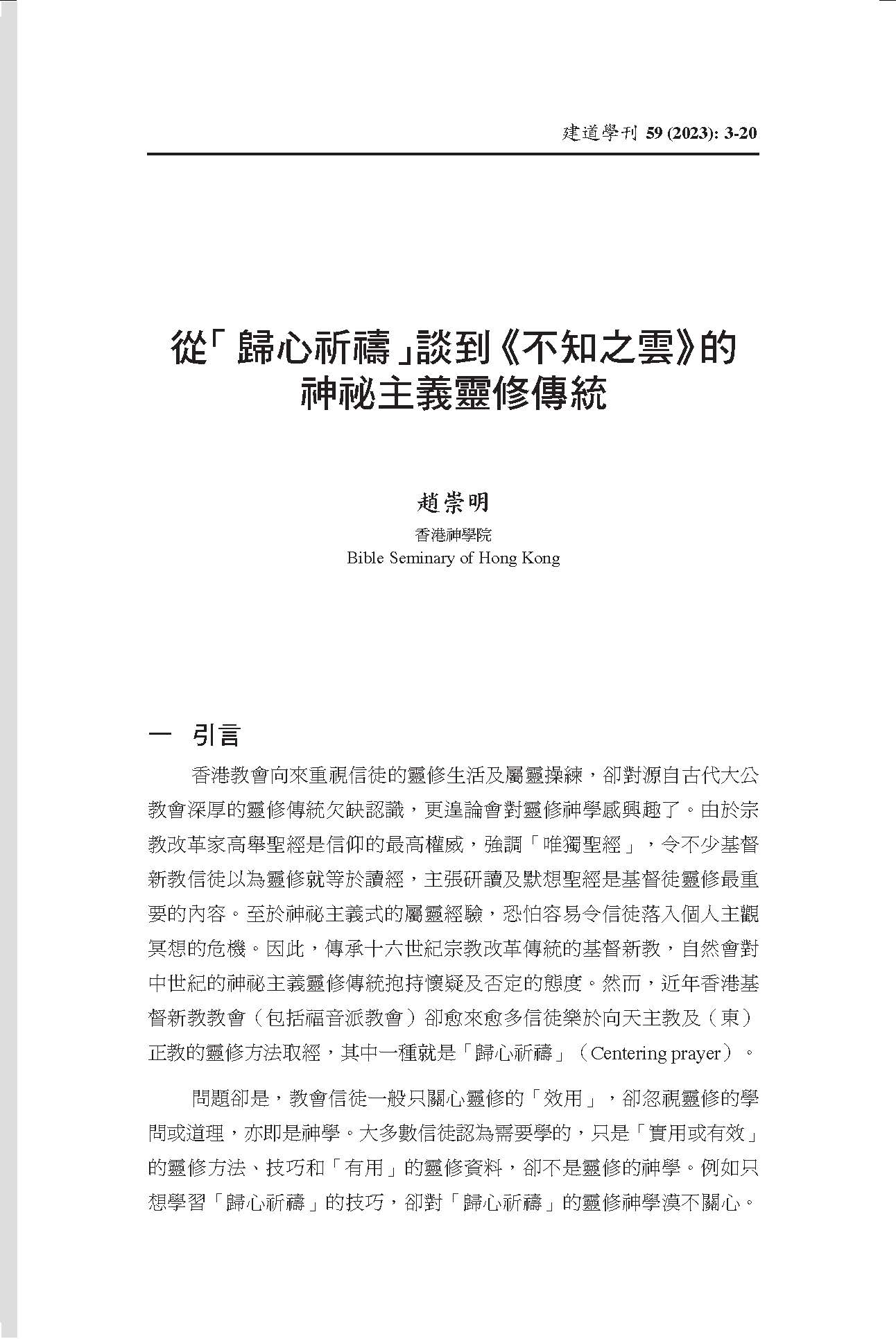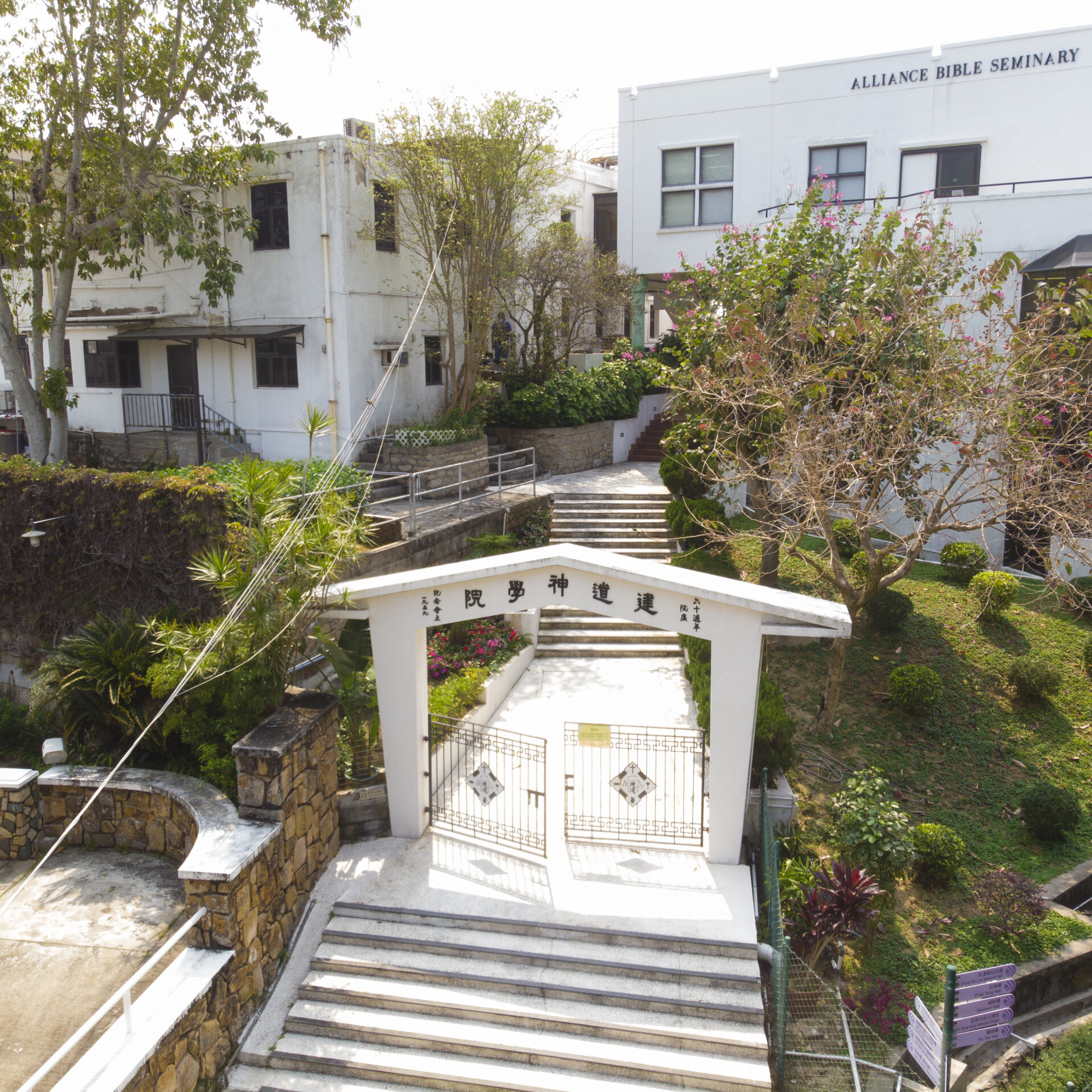從「歸心祈禱」談到《不知之雲》的神祕主義靈修傳統/趙崇明
撮要
香港基督新教教會向來重視信徒的靈修生活及屬靈操練,卻對源自古代大公教會深厚的靈修傳統欠缺認識,尤其對大公教會的神祕主義靈修傳統抱持懷疑及否定的態度。本文討論的重點,就是神祕主義靈修傳統是否真的大有問題,抑或其實有其精彩之處?因此,文章先會說明「神祕主義」的定義,然後指出近年在基督新教教會較多人認識的「歸心祈禱」與代表神祕主義靈修傳統的《不知之雲》的關係,然後再指出《不知之雲》如何承傳古代一些神祕主義靈修神學的代表人物如普羅提諾斯(Plotinus)、偽狄奧尼色斯(Pseudeo-Dionysius the Areopagite)等人的思想,讓傳承自宗教改革靈修傳統的讀者,既能以批判同時亦以欣賞的態度去領會神祕主義靈修傳統的精彩之處。
ABSTRACT
The Protestant Churches in Hong Kong always attach great importance to the spiritual life and spiritual practice of their believers, but they lack the understanding of the profound spiritual tradition derived from the ancient Catholic Church, and they are particularly skeptical and negative about the mystic spiritual tradition. Therefore, this article mainly discusses whether the mystic spiritual tradition is really problematic, or if it is actually wonderful. The author will first explain the definition of “mysticism”, and points out the relationship between “Centering Prayer”, which is more adopted in the Protestant Church in recent years, and The Cloud of Unknowing, that represents the spiritual tradition of mysticism. Followed by explaining how The Cloud of Unknowing was affected by the thoughts of some ancient representatives of mystical spiritual theology such as Plotinus, Pseudeo-Dionysius the Areopagite, etc. The aim is to enable the readers to grasp the wonderful aspects of the tradition of mysticism.
原載於《建道學刊》59期(2023年1月),頁 3-20。
最新文章
新手牧者研究計劃(三):新手牧者的身心靈狀態 / 盧慧儀
2025 年 11 月 19 日
個體與關係:滕近輝思想中「深化」的靈性觀 / 倪步曉
2025 年 11 月 18 日
香港九龍塘基督教中華宣道會之起源和發展史/陳智衡
2025 年 10 月 20 日
编辑精选
[電子書]困境與抉擇:「建道研究中心30週年誌慶」跨學科研討會論文集/廖炳堂、倪步曉主編
2025 年 1 月 2 日
從梧州到長洲:建道神學院125年的挑戰與恩典 / 陳智衡
2023 年 10 月 1 日
微小教會的見證/高銘謙
2023 年 6 月 1 日







